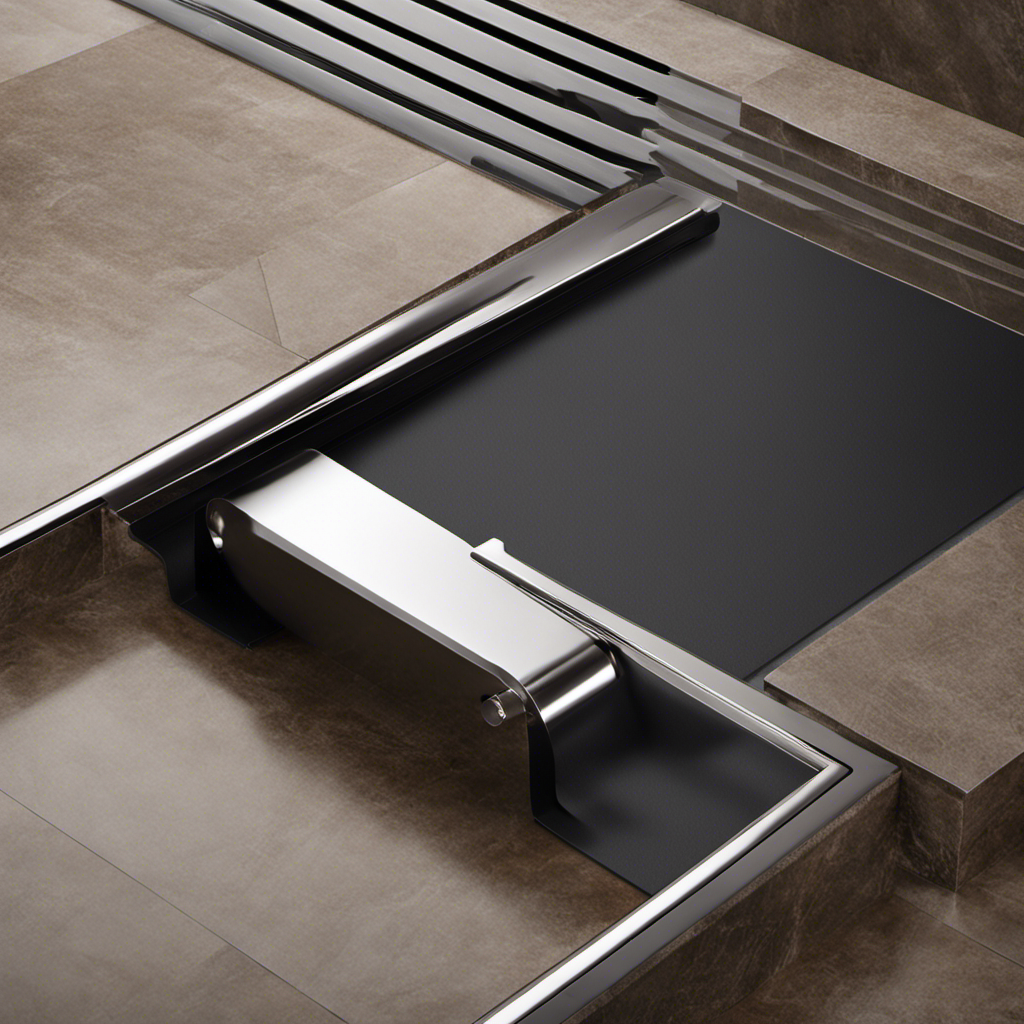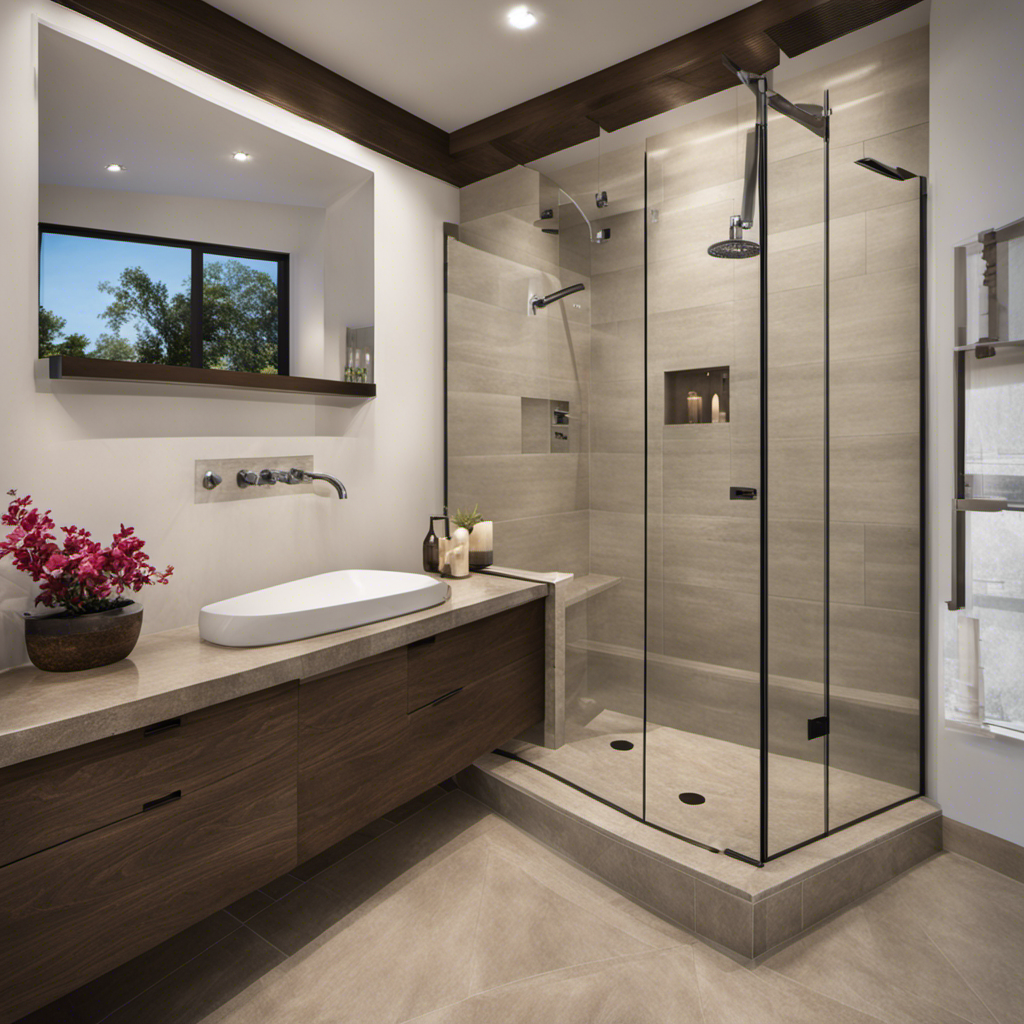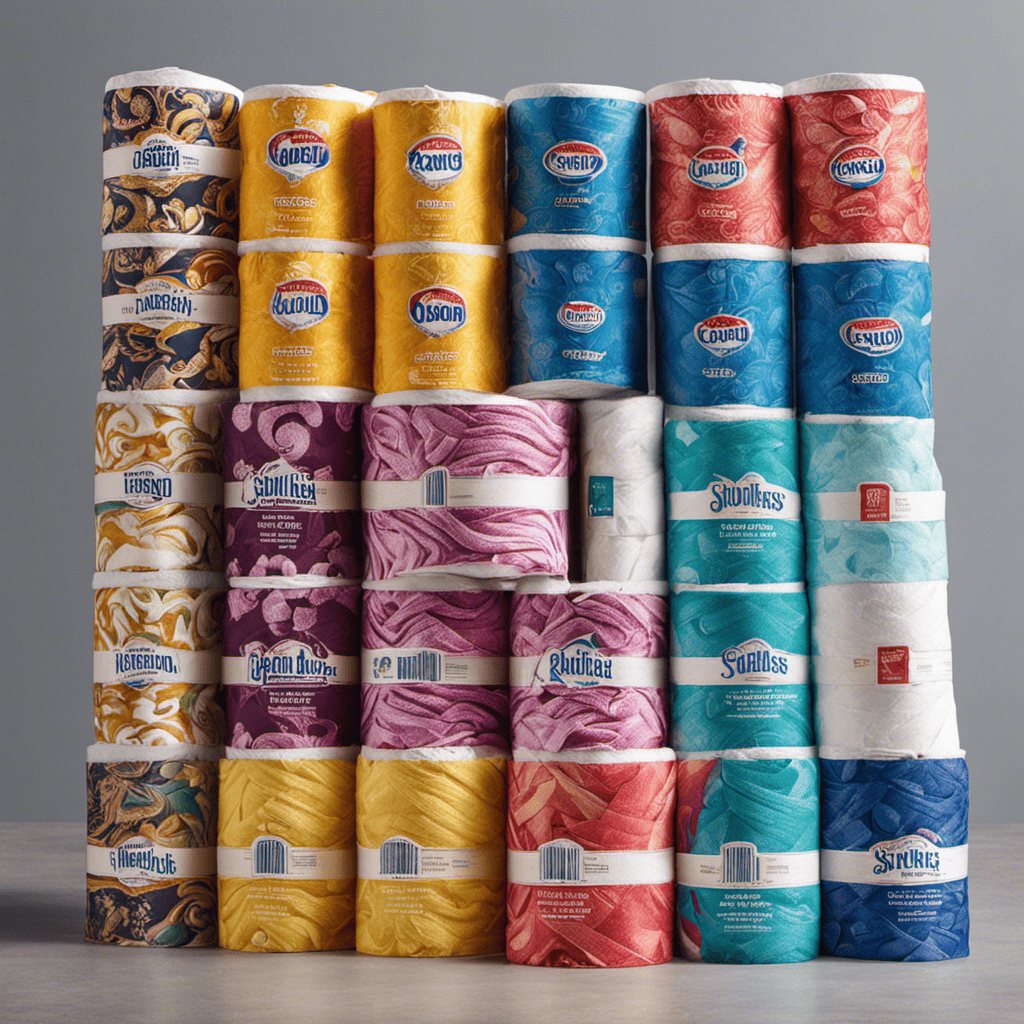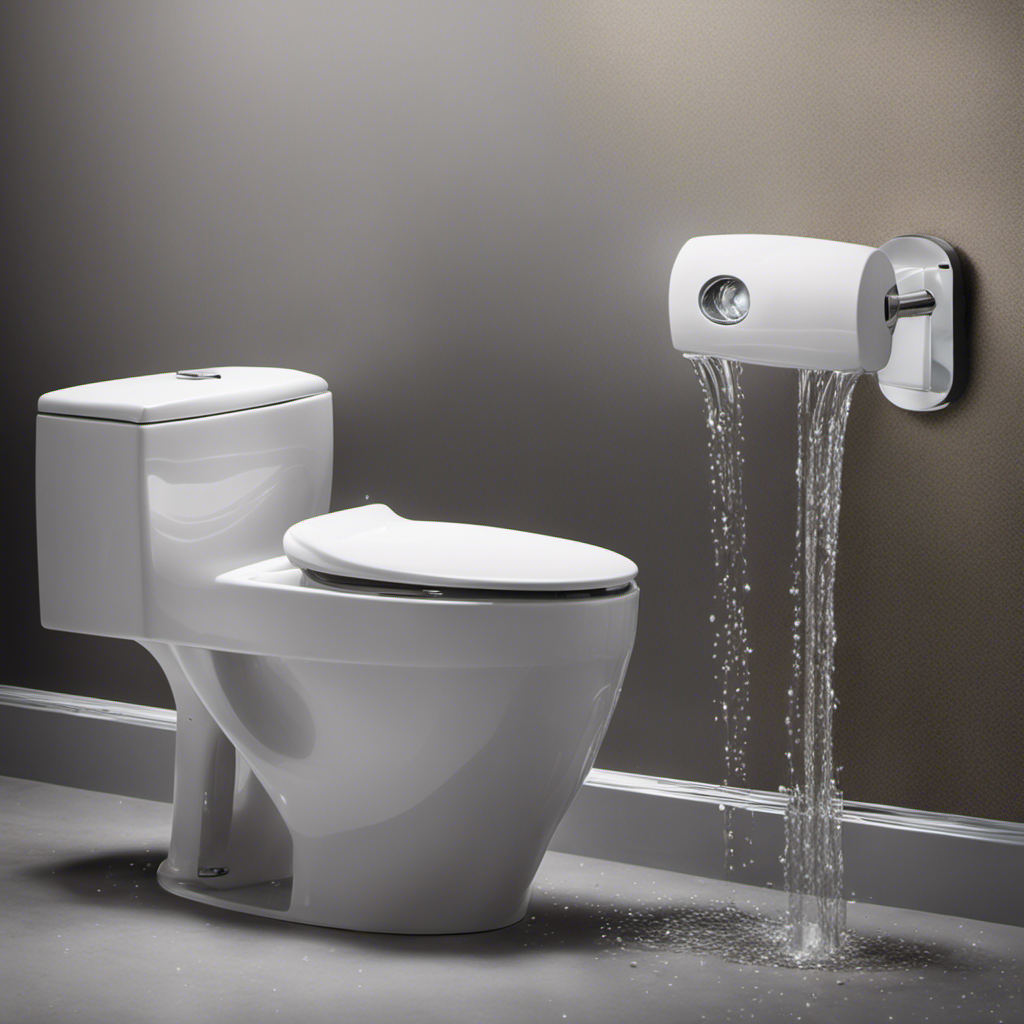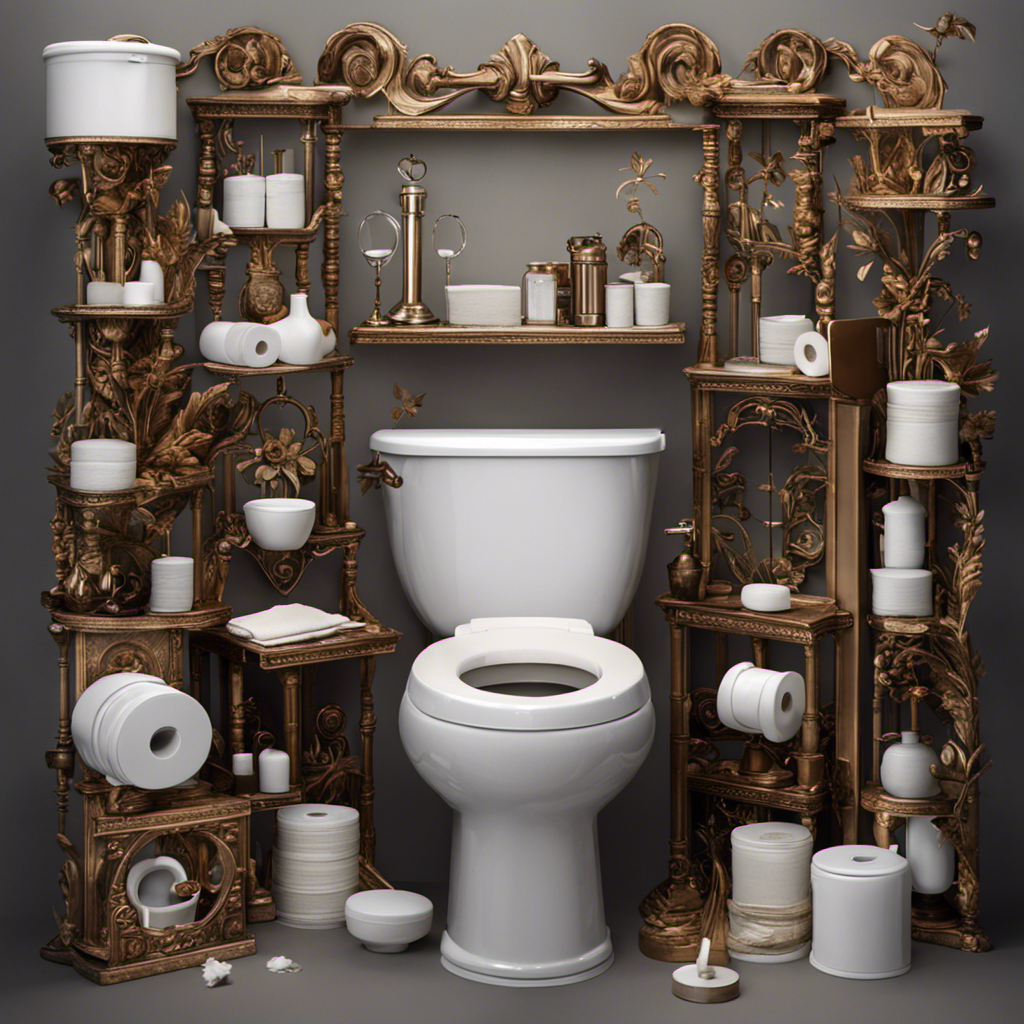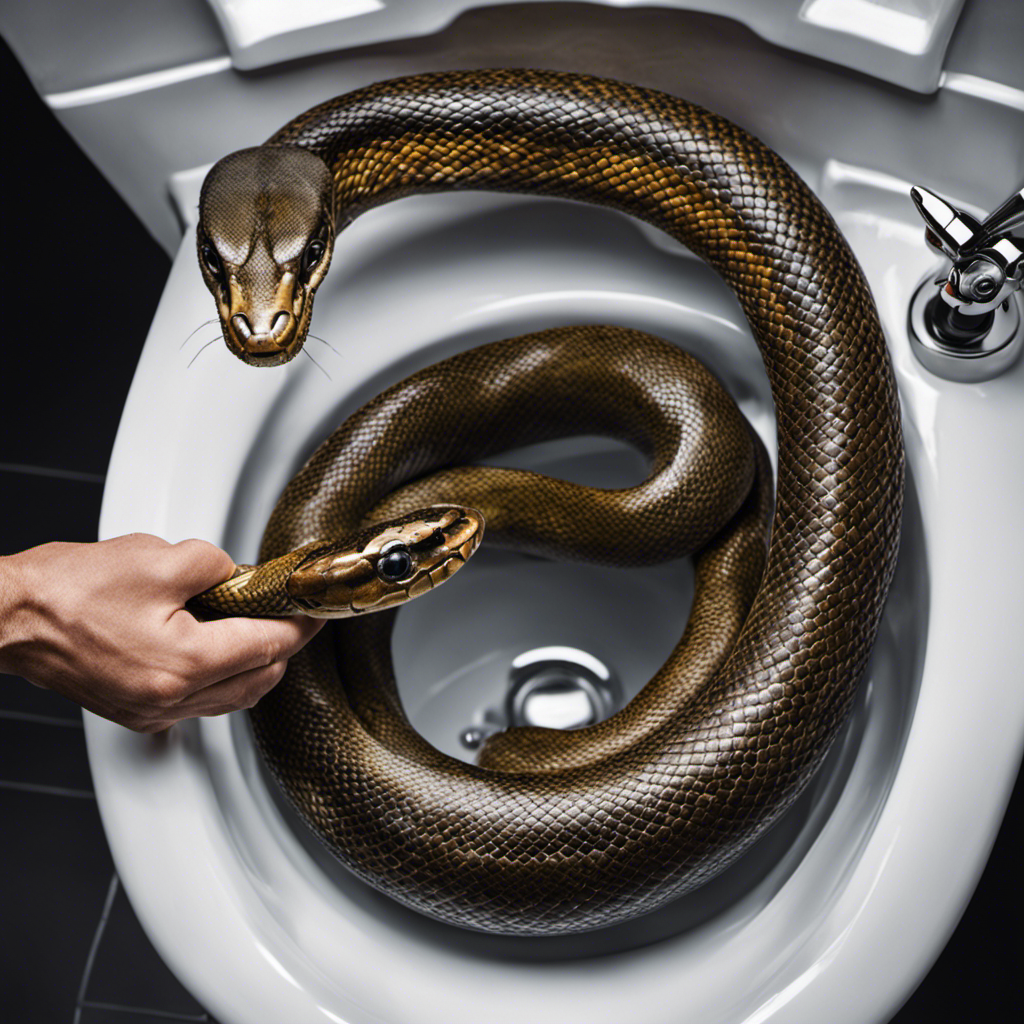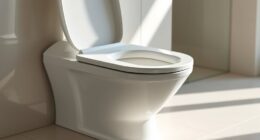When it comes to choosing a shower drain, there are two main options: point drains and linear drains.
Point drains are easy to install and cost-effective, but they have limited design options and require multiple tile cuts.
On the other hand, linear drains offer greater design flexibility and efficient drainage solutions. They blend seamlessly with modern bathroom designs and are ideal for barrier-free showers.
In this article, I will provide a detailed comparison of these two options, highlighting their pros and cons, as well as important factors to consider when upgrading your shower drain.
Key Takeaways
- Point drains are easy to install and cost-effective, but they have limited design options and require multiple tile cuts.
- Linear drains provide greater design flexibility, blend seamlessly with modern bathroom designs, and are ideal for barrier-free showers and accessible bathrooms.
- Linear drains offer efficient drainage solutions with a larger surface area for water to drain.
- Tile-in-drains offer a seamless aesthetic and require regular cleaning and inspection to prevent clogs and damage.
Pros and Cons of Point Drains
I prefer point drains because they are easy to install, cost-effective, and suitable for small showers.
Point drains are the geometric-shaped outlets for drain placement in the middle or corner of a shower.
When it comes to installing point drains, there are a few tips to keep in mind. Firstly, ensure that the drain is properly aligned with the slope of the shower floor to allow for efficient water drainage.
Secondly, consider the different designs available for point drains. Some point drains have removable grates, making it easier to clean and maintain. Others have integrated tile inserts, creating a seamless and aesthetically pleasing look.
Advantages of Linear Drains
Linear drains provide a sleek and modern look to any bathroom design. Their design flexibility and minimal appearance make them ideal for contemporary bathrooms.
With their larger surface area, linear drains offer efficient drainage solutions, ensuring that water is swiftly and effectively drained from the shower area. This not only prevents water accumulation and potential damage but also reduces the risk of slips and falls.
Moreover, the long-term durability of linear drains is a significant advantage. Made from high-quality materials, they are built to withstand the test of time and provide reliable performance.
When choosing a shower drain, considering the long-term durability of linear drains is essential to ensure that your bathroom remains functional and visually appealing for years to come.
Tile-in-Drains and Maintenance
Regular cleaning and inspection of tile-in-drains is necessary to prevent clogs and damage. Tile-in-drains offer a seamless aesthetic without a full linear drain. They have a tile insert that maintains the continuity of the floor tiles.
Tile-in-drains have a three-piece design with a channel pipe, threaded drain body, and tileable grate. They create an almost invisible appearance. However, like any other type of drain, tile-in-drains can also face common problems.
Some of the common tile-in-drain problems include clogs caused by hair and debris accumulation, damage to the tile insert or grate, and leaks in the drain body. To address these issues, it is important to follow proper cleaning techniques and conduct regular inspections to identify and resolve any problems early on.
Shower Drain Installation Considerations
When considering shower drain installation, it is crucial to properly prepare the floor according to the specific requirements of different materials.
Here are some key considerations for shower drain installation:
- Choose the right shower drain material for your bathroom, such as stainless steel or PVC, based on durability and compatibility with your plumbing system.
- Ensure proper drain slope to allow water to flow efficiently towards the drain, preventing water accumulation and potential damage.
- For concrete floors, create a recessed area to accommodate the drain assembly.
- Wooden floors require an opening for the drain and additional framing for reinforcement.
Importance of Proper Drainage in Shower Areas
I find it essential to emphasize the significance of proper drainage in shower areas. The importance of slope cannot be overstated when it comes to preventing water damage. Adequate drainage prevents water accumulation, which can lead to mold and mildew growth.
Additionally, efficient drainage reduces the risk of slips and falls in the bathroom, ensuring the safety of users. Another benefit of proper drainage is that it prolongs the lifespan of bathroom flooring by preventing water damage. By choosing the right shower drain type, you can ensure effective water flow and avoid any potential issues.
It is crucial to prioritize the installation of a well-designed drainage system to maintain a dry and safe shower environment.
Frequently Asked Questions
What Are the Different Materials Available for Shower Drains?
There are various materials available for shower drains. Some common options include stainless steel, PVC, and brass. Each material has its pros and cons, such as durability, cost, and compatibility with different plumbing systems.
Can Linear Drains Be Installed in Existing Showers or Are They Only Suitable for New Constructions?
Linear drains offer advantages over point drains in terms of installation. They can be retrofitted in existing showers, providing greater design flexibility and efficient drainage. However, it is important to consider the pros and cons of retrofitting and seek professional advice for complex installations.
Are There Any Specific Maintenance Tips for Tile-In-Drains?
Maintenance tips for tile-in-drains include regular cleaning to prevent clogs, using appropriate cleaning products, and removing hair and debris. Proper maintenance extends the drain’s lifespan and functionality, ensuring effective water flow.
How Do I Know if My Bathroom Layout Is Compatible With a Linear Drain Installation?
To determine if my bathroom layout is compatible with a linear drain installation, I need to consider factors like the floor material, plumbing system, and available space. Consulting a professional during my bathroom renovation would provide valuable guidance.
Are There Any Alternative Options to Point and Linear Drains for Shower Drainage?
Yes, there are alternative options to point and linear drains for shower drainage. These options may include trench drains, center drains, or even custom-designed drains. Each option has its own benefits and drawbacks.
Conclusion
After carefully considering the pros and cons of both point drains and linear drains, as well as the option of tile-in-drains, it is clear that the choice of shower drain is crucial for a successful bathroom renovation or upgrade.
The decision should take into account factors such as budget, compatibility, aesthetics, and long-term durability. Proper drainage is essential in shower areas to prevent water accumulation and potential damage.
Regular cleaning and maintenance of shower drains are also necessary to prevent clogs and blockages. Seeking professional advice for complex installations is recommended.
So, choose wisely and enjoy a functional and visually appealing shower experience.
